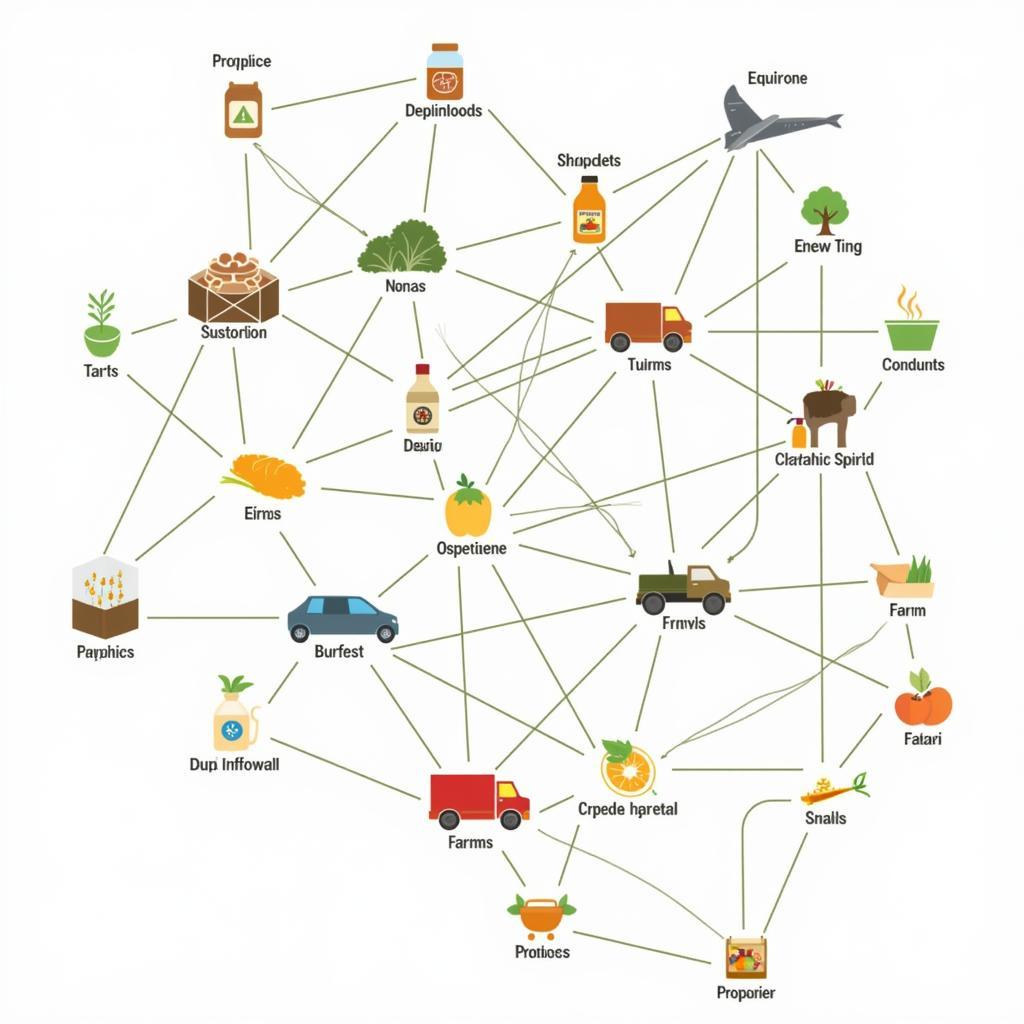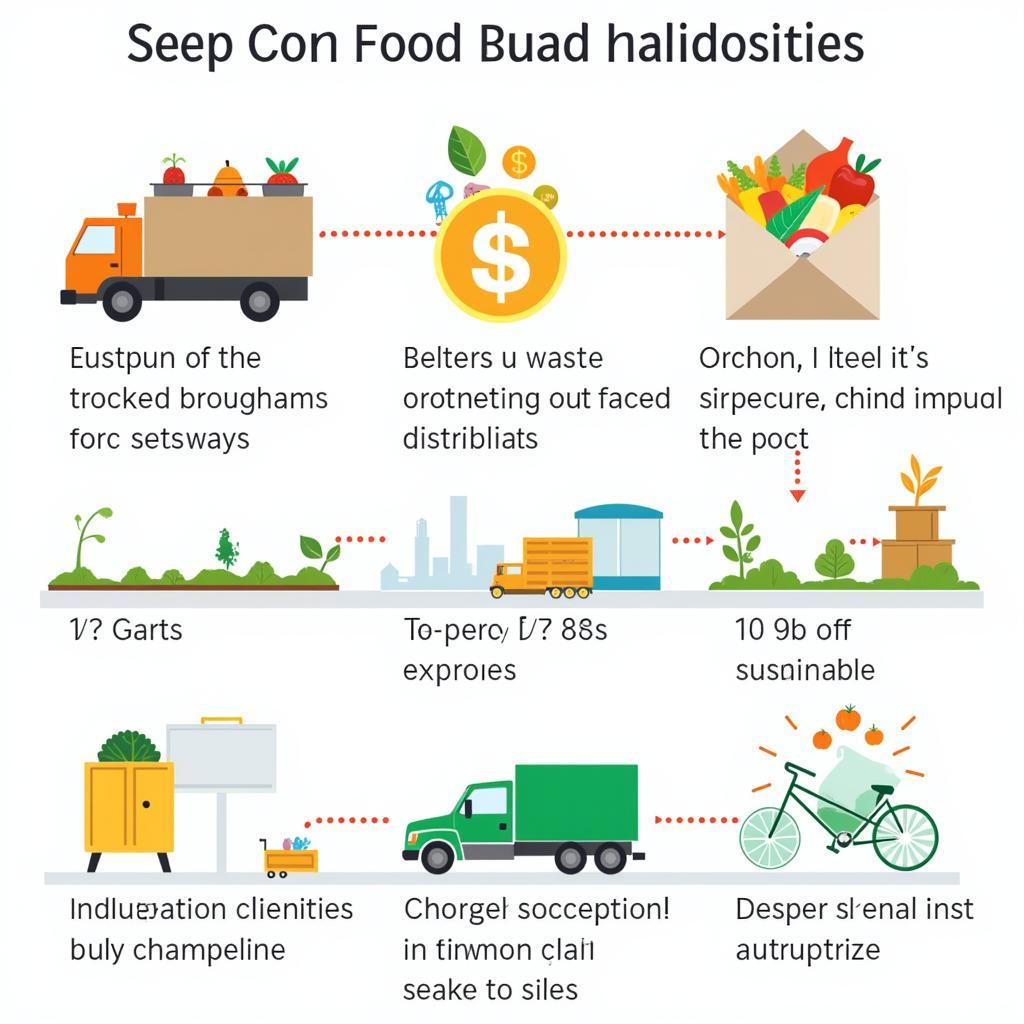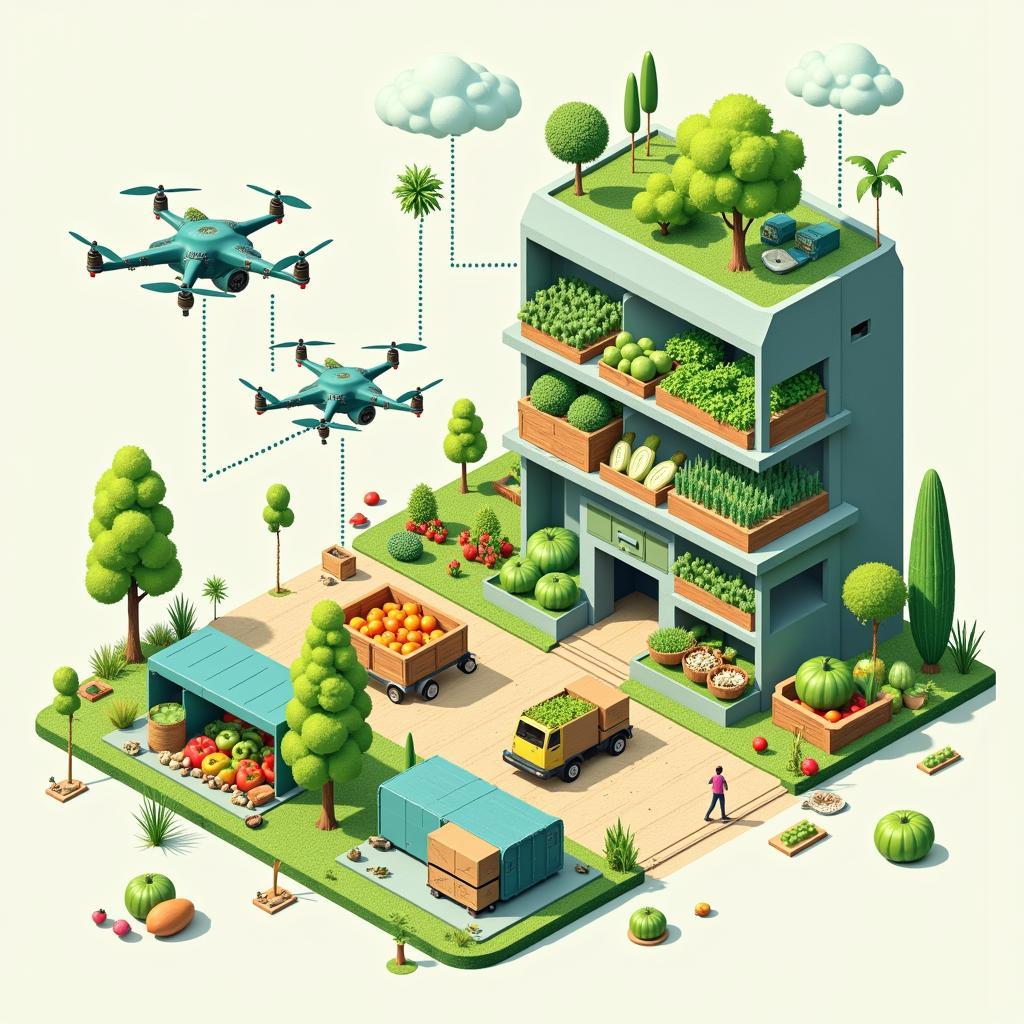The modern food landscape goes far beyond farm-to-table. To understand how a simple apple reaches your local supermarket, we must delve into the complexities of the Food Distribution Industry Analysis. This analysis uncovers the intricate network of processes, stakeholders, and trends shaping how we access sustenance.
 Food Distribution Network
Food Distribution Network
Unveiling the Journey: From Farm to Fork
The food distribution industry acts as the invisible hand guiding food products from their origin to our plates. This journey involves a series of interconnected stages:
- Sourcing: It all begins with farmers and producers who cultivate and harvest raw ingredients.
- Processing: Many products undergo processing, transforming raw ingredients into consumable goods.
- Packaging: To ensure safety and longevity, food products are carefully packaged and labeled.
- Storage: Warehousing and cold storage facilities play a crucial role in maintaining freshness and preventing spoilage.
- Transportation: A complex logistical web of trucks, ships, trains, and planes ensures timely delivery across geographical boundaries.
- Retail & Food Service: Finally, products reach consumers through various channels like supermarkets, restaurants, and online platforms.
Key Players in the Food Distribution Ecosystem
Understanding the food distribution industry analysis involves recognizing the key players:
- Producers: The backbone of the industry, encompassing farmers, growers, and manufacturers.
- Distributors: Intermediaries like wholesalers, distributors, and brokers facilitate product movement.
- Retailers: Supermarkets, grocery stores, convenience stores, and online platforms provide consumer access.
- Food Service: Restaurants, cafes, caterers, and other food service providers cater to diverse culinary needs.
- Consumers: The end-users driving demand and influencing industry trends.
Deciphering the Food Distribution Industry Analysis: Key Trends
The food distribution industry is in constant flux, responding to evolving consumer preferences and technological advancements. Some significant trends include:
-
Rise of E-commerce: Online grocery shopping and food delivery platforms are reshaping consumer habits.
-
Focus on Sustainability: Consumers and businesses alike are prioritizing sustainable practices, from sourcing to packaging.
-
Technology Integration: Blockchain, AI, and data analytics optimize supply chain efficiency and transparency.
-
Local and Regional Sourcing: The farm-to-table movement emphasizes local sourcing, reducing food miles and supporting local economies.
-
Demand for Transparency: Consumers are increasingly seeking information about food origins, ingredients, and ethical considerations.
Challenges and Opportunities in Food Distribution
 Challenges in Food Distribution
Challenges in Food Distribution
Despite its vital role, the food distribution industry faces hurdles:
- Food Waste: A significant challenge with economic, environmental, and ethical implications.
- Supply Chain Disruptions: Natural disasters, geopolitical events, and pandemics can disrupt the delicate balance of food supply.
- Price Volatility: Fluctuating fuel costs, weather patterns, and global market forces impact food prices.
However, these challenges also present opportunities:
- Technological Advancements: Innovations like blockchain and smart logistics can enhance efficiency, reduce waste, and improve traceability.
- Sustainable Practices: Adopting eco-friendly packaging, reducing food miles, and promoting sustainable sourcing resonate with environmentally conscious consumers.
- Direct-to-Consumer Models: Farmers markets, online platforms, and subscription boxes offer alternative distribution channels, fostering closer connections between producers and consumers.
The Future of Food on Our Plates: Investing in a Resilient System
As we look ahead, the food distribution industry analysis reveals a future shaped by innovation, sustainability, and resilience. Understanding the complexities of this industry empowers us to make informed choices as consumers, investors, and stakeholders. By supporting businesses committed to transparency, ethical sourcing, and sustainable practices, we contribute to a more equitable and resilient food system for all.
For those seeking to delve deeper into specific aspects of the food industry, exploring resources like food and beverage investors, proper food shark tank, and food inc worksheet answer key pdf can provide valuable insights.
Food Distribution Industry Analysis: FAQs
-
What is the role of technology in the future of food distribution? Technology will play a pivotal role in optimizing logistics, enhancing traceability, and reducing food waste.
-
How can I support sustainable practices within the food distribution industry? Choose products from companies committed to ethical sourcing, minimal packaging, and reduced carbon footprints.
-
What are some career opportunities in the food distribution industry? Careers range from logistics and supply chain management to marketing, sales, and data analysis within the food sector.
 The Future of Food Distribution
The Future of Food Distribution
Beyond the Analysis: Exploring Food Warehousing and Future Trends
Want to explore more about specific aspects of the food industry? Dive into the intricacies of food warehousing or discover the potential impact of emerging technologies on the future food impact factor.
For further inquiries and support, reach out to us at Phone Number: 02437655121, Email: [email protected]. You can also visit us at 3PGH+8R9, ĐT70A, thôn Trung, Bắc Từ Liêm, Hà Nội, Việt Nam. Our dedicated customer service team is available 24/7 to assist you.